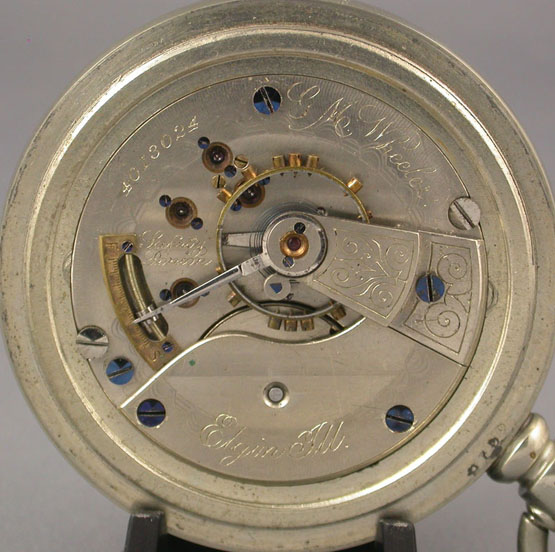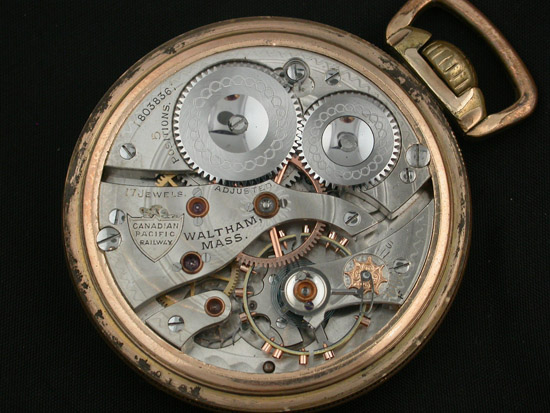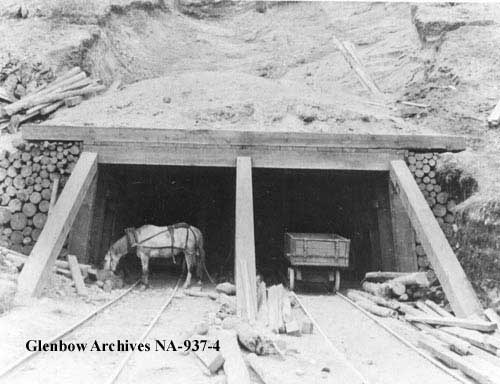
| WWT Shows | CLICK TO: Join and Support Internet Horology Club 185™ | IHC185™ Forums |

|
• Check Out Our... • • TWO Book Offer! • |
Welcome Aboard IHC185™  Internet Horology Club 185
Internet Horology Club 185  IHC185™ Discussion Site Main Page
IHC185™ Discussion Site Main Page  Our Exclusive "Timekeepers Photo Gallery"
Our Exclusive "Timekeepers Photo Gallery"  IHC185™ "Timekeepers Photo Gallery"
IHC185™ "Timekeepers Photo Gallery"  CANADIAN Private-Label Watches
CANADIAN Private-Label Watches
 Internet Horology Club 185
Internet Horology Club 185  IHC185™ Discussion Site Main Page
IHC185™ Discussion Site Main Page  Our Exclusive "Timekeepers Photo Gallery"
Our Exclusive "Timekeepers Photo Gallery"  IHC185™ "Timekeepers Photo Gallery"
IHC185™ "Timekeepers Photo Gallery"  CANADIAN Private-Label Watches
CANADIAN Private-Label WatchesRelated Content: Larry Buchan's ..."Tales from the Rails"
Go  | New Topic  | Find-Or-Search  | Notify  | Tools  | Reply to Post  |  |
| Railway Historian IHC Life Member Site Moderator |
Here is another Calgary private label with Alberta, marked on it. The name is PENGELLY AKITT LTD.  | |||
| Railway Historian IHC Life Member Site Moderator |
Here is a picture of the movement a Waltham PS Bartlett Tu Tone 1892, Serial #16192347. | |||
| Railway Historian IHC Life Member Site Moderator |
Here is one an Elgin from Vancouver, B.C.. It is an interesting dial with dual time zones.  | |||
| Railway Historian IHC Life Member Site Moderator |
Picture of movement a G.M. Wheeler Serial #4013042 Adjusted. 15-17 Jewels. Manufactured 1890  | |||
| IHC Member 376 Watchmaker |
Larry those are great looking watches or a better word would be beautiful thanks for sharing them. | |||
| IHC Life Member |
Thanks for posting Larry I alway enjoy looking at different watches, keep them coming. | |||
| IHC President Life Member |
Most of us would never see anything like these without your posts! Wonderful images! | |||
| Railway Historian IHC Life Member Site Moderator |
Here is an advertisement for R. Hemsley from a Brotherhood souvenir magazine for a convention held in Montréa. | |||
| Railway Historian IHC Life Member Site Moderator |
Here is a private label from Prince Rupert.  | |||
| Railway Historian IHC Life Member Site Moderator |
Here is the movement an Elgin #349  | |||
| Railway Historian IHC Life Member Site Moderator |
Here is a picture of the first train arriving in Prince Rupert  | |||
| Railway Historian IHC Life Member Site Moderator |
Here is an Eatons Swiss made pocket watch  | |||
| Railway Historian IHC Life Member Site Moderator |
Here is a picture of the movement. It is 21 jewel, and adjusted to 5 positions.  | |||
| Railway Historian IHC Life Member Site Moderator |
Here is a nice busy dial from W.B.Webb Allendale, Ontario.  | |||
| Railway Historian IHC Life Member Site Moderator |
Here is a picture of the movement.  | |||
| Railway Historian IHC Life Member Site Moderator |
Although not a private label I wanted to display this watch I bought a couple of years ago.  | |||
| Railway Historian IHC Life Member Site Moderator |
It is a Waltham 1908 CPR and I bought it from the granddaughter of the man who owned it. I will post his story tomorrow.  | |||
| Railway Historian IHC Life Member Site Moderator |
Here is the provenance of the CPR watch. I bought from the grandaughter of Percy Moth April 23, 2005 Waltham CPR pocket watch serial number 18038361 It is our understanding that this watch originally belonged to Percy Edgar Baker Moth, the first Station Master (Agent/Operator) at Bankhead Alberta, Gertrude Moth came from England to keep house for Percy at Bankhead. Carol Stolz inherited the watch from her father Clint Patton. It was likely a gift to Clint from Gertrude since he was married to her daughter Helen; hence Gertrude was Carol's grandmother. After leaving Bankhead, Percy Moth moved to Monitor, Alberta. Carol recalls visiting the historical site at Bankhead with her mother and being shown a picture of her grandmother in the archives. Gertrude Ethel Moth had married Leo Rumrell Beebe in 1915. Bankhead was a mining community located 3 miles east of the town of Banff which is located inside of the Banff National Park and started in 1903. This park in the Rocky Mountains is located 70 miles west of Calgary, Alberta. The CPR mined a lot of coal at Bankhead but the operation did not quite fit in with the National Park concept, and labor problems led to it closing in 1922. Most of the buildings were removed to Banff. There was lots of coal 10 miles east out of the park in Canmore.  | |||
| Railway Historian IHC Life Member Site Moderator |
The photo above shows the mine at Bankhead and this one shows the town.  | |||
| Railway Historian IHC Life Member Site Moderator |
Here is a picture of the Bankhead CPR Station that Percy Moth worked as agent at. It is being moved to Banff In 1928. All photos from the Glenbow Archives  | |||
| Railway Historian IHC Life Member Site Moderator |
The CPR's Crowsnest Line. Preamble; When Canada confederated as a country in 1867 it consisted of Prince Edward Island, Nova Scotia, New Brunswick, Upper Canada, (Québec) and Lower Canada (Ontario) in the East, Manitoba and joined in 1870, and British Columbia in the West in 1871. A condition, British Columbia made was that a transcontinental railway be built within 10 years of that date. Ottawa in Ontario became country's capital and the leaders were serious about building this transcontinental railway. Sir Sandford Fleming was sent out to do the first survey for the railway. He surveyed a route that went further north through Fort Edmonton and over the Yellowhead Pass altitude 3641 feet which kept the grade down to about 1% this was the route used by the Canadian Northern Railway and the Grand Trunk Pacific Railway in the early 1900s. There were many scandals involved in building the transcontinental railway that I won't elaborate on at this time. On October 21, 1880 a viable syndicate was formed by a group of Canadian businessman of Scottish descent to build the transcontinental railway. The Canadian Pacific Railway Company was incorporated February 16, 1881 with George Stephan as its first president. The 1881 construction season, failed the chief engineer and general superintendent were fired after building only 131 miles of track at the end of season. One of the syndicate members James Jerome Hill suggested William Cornelius Van Horn, an American, who would get the job done. He was hired and said that he would build 500 miles of track, the first year; floods in 1882 delayed the start of construction. In spite of this 418 miles of mainline and 110 miles of branch lines were built in that season. One of the surveyors for the CPR was James Hector, who found a route over the Rocky Mountains, which was called the Kicking Horse Pass. At an altitude of 5339 feet it became an operating nightmare for the CPR with its 2% grades westward and 4.5 % grades east of the great divide they were in the steepest grades in North America at that time. On November 7, 1885, the eastern and western portions of the CPR were joined at Craigellachie B.C. the last spike was driven by Donald A. Smith. And on June 28, 1886 the first transcontinental train called the Pacific Express left for the West Coast from Montréal and Toronto. Information for this history was taken from the Canadian Pacific Railway's website, and Wikipedia. I've attached a picture that is Canada's equivalent to the joining of track by the Union Pacific in 1869 at Promontory Point in Utah. To the left of Donald Smith with the dark beard is William Cornelius Van Horne the CPR's President, and the tall man with a white beard is Sir Sandford Fleming surveyor of the Yellowhead Pass and inventor of Standard Time. The young boy to the right of Donald Smith seen witnessing this historical event has never been identified  | |||
| Powered by Social Strata | Page 1 ... 4 5 6 7 8 9 10 ... 52 |
| Your request is being processed... |
|
©2002-2025 Internet Horology Club 185™ - Lindell V. Riddle President - All Rights Reserved Worldwide


